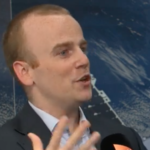Switzerland-based ClearSpace and its industrial partners have successfully passed their first major programme review with the European Space Agency (ESA) for its ground-breaking mission to remove a large debris object from Earth orbit.
With this milestone, ClearSpace has shown the ability to meet the technology requirements this mission demands.
In addition, ESA and the participating states have reconfirmed their support for active debris removal by fully funding the next phase of the ClearSpace-1 programme during ESA’s Ministerial Council last November.
In 2020, ClearSpace was commissioned by ESA to build, launch, and fly a novel deorbit mission that will rendezvous with and capture a large piece of debris in orbit, and then safely pilot the object into Earth’s atmosphere.
Four-armed capture system
As a key step in the development of this unique debris-removal mission, ClearSpace has designed a four-armed capture system for its robotic satellite. This innovative technology successfully passed proof-of-concept testing at ESA’s ESTEC technology centre in the Netherlands in October 2022, a major milestone that contributed to ClearSpace’s successful program review.
ClearSpace is now qualified to proceed to the next phase of ClearSpace-1, continuing with its industrial partners on the satellite’s detailed design, procurement of spacecraft equipment, and manufacturing of the engineering model servicer satellite, all with an eye toward launch as soon as 2026.
Major step
“Along with an experienced European industrial team and the close collaboration with ESA, we were able to reach this important milestone in an effective and technologically sound manner,” said Muriel Richard-Noca, ClearSpace chief technology officer and cofounder.
Luc Piguet ClearSpace CEO and cofounder added: “This is a major milestone for ClearSpace, setting us on course to become one of the world leading In-Orbit Servicing companies and is also a major step toward the resolution of the space debris issue. Debris represents a growing threat to the satellite services we all depend on, including climate change, weather prediction, communication, and a host of other applications. The cost of inaction is only increasing.”Subscribe to the FINN weekly newsletter

